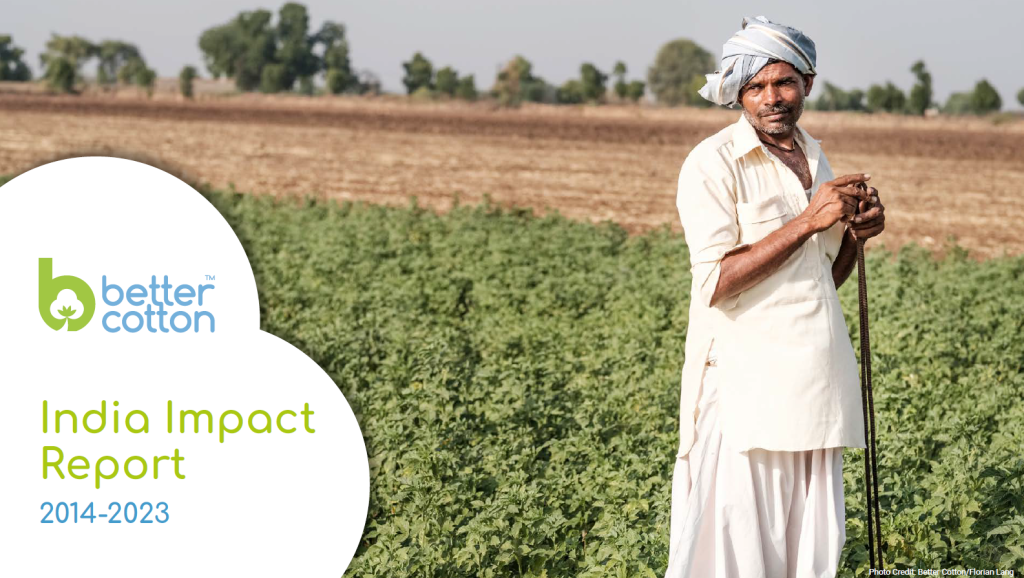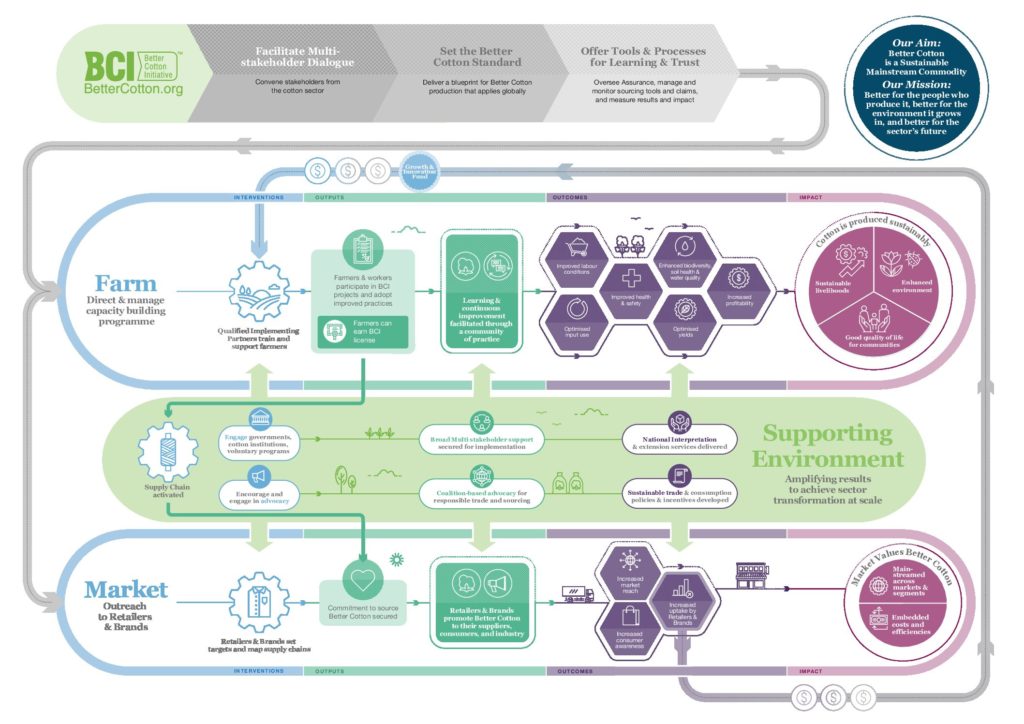Background
A Theory of Change (ToC) is a logical schema that defines an organisation’s vision and explains the steps believed to bring about that vision. Through causal pathways, it connects activities with outcomes and impacts, including assumptions and contextual influences. ToC aims to answer the question: what is the change we are working for and what needs to happen for change to come about?
Better Cotton has an ambitious vision while operating in a complex environment. Developing a formal ToC was therefore necessary to enable its diverse stakeholders to identify and agree on the key investments of human and financial resources it will take to bring about our desired change in the cotton production sector.
The ToC is a living document and is regularly revisited and tested. Better Cotton will engage in ongoing stakeholder consultation and use learning from its monitoring and evaluation system to adapt the ToC over time.
Our Vision of Change
Our mission is to help cotton communities survive and thrive, while protecting and restoring the environment.
Our Theory of Change calls for transformation of the cotton production sector, catalysing movement toward sustainability in two spheres: Farm and Market, with changes amplified and sustained by supportive production and consumption policies.
Better for farmers and the environment
Farmers adopt more sustainable production systems, leading to farmers having free choice to grow Better Cotton because it is profitable. They can grow it in a way that promotes decent working conditions, enhances the environment, and brings benefit to their communities.
Better for the sector’s future
Farmers have access to the market—and the market has proven that it values Better Cotton. It is a market that has embedded the costs of externalities into sourcing Better Cotton into its procurement strategies. The entire supply chain is engaged in sourcing Better Cotton. The supporting policy environment supports scale and long-term viability of improved sustainable cotton farming.




